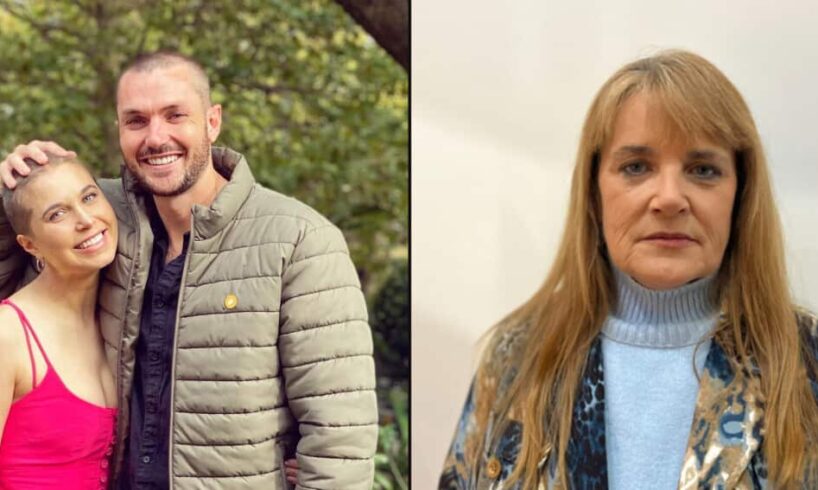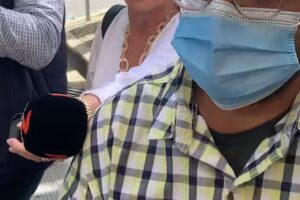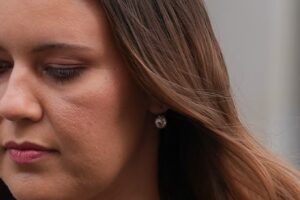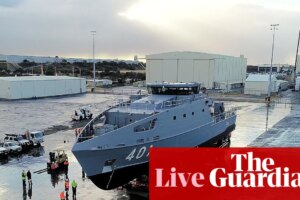
From cosmetic fixes to life-saving surgery, Insight hears from people who have turned to medical tourism. Is it always worth it, and what happens when things go wrong, far from home? Watch Insight episode Medical Tourism Tuesday 29 July at 8.30pm on SBS or live on SBS On Demand.When Hannah Thomas, 32, received a phone call following a routine blood test, she did not expect it would lead to a cancer diagnosis that same week.In 2022, Hannah was diagnosed with T-cell acute lymphoblastic leukaemia (ALL), a type of cancer that affects the blood and bone marrow, where there’s an overproduction of immature white blood cells.She was immediately admitted to hospital and underwent chemotherapy five days a week for two months.The chemotherapy did not work but following other treatments, including a bone marrow transplant, Hannah had no traces of cancer in her body a year later.
However, shortly after Hannah married in 2023, the cancer came back.She and her husband, Simon, met with Hannah’s haematologist and were introduced to the concept of CAR T-cell therapy, a form of immunotherapy that uses a patient’s own genetically modified T-cells (a type of white blood cell).This experimental cancer treatment is offered in Australia for the more common B-cell type of ALL but is not currently offered as standard treatment for T-cell ALL.
But Hannah didn’t qualify for the clinical trials in Melbourne and London, so she and Simon decided to seek the treatment in Singapore.
Hannah and Simon married in 2023, shortly before her cancer came back. Source: Supplied
The Sydney couple had less than 24 hours to figure out how they were going to pay for the costs of the trial and accommodation, which they estimated to be around $400,000.The couple immediately investigated loans and started the application process to withdraw their superannuation.”In the end, the only reason we were able to catch that flight and go there was because one of our closest friends Dan set up a GoFundMe for us,” Hannah told Insight.
“Though it’s hard not to feel a bit guilty. And I think it’s only natural to wonder if you’re worthy of all that.”
Seeking options abroad
Like Hannah and Simon, Dianne Mehmet turned to Asia for experimental cancer treatment when options in Australia became limited.Dianne’s son Jordan had just finished high school in 2013 when he was diagnosed with Ewing sarcoma — a rare, aggressive cancerous tumour that affects bones and soft tissue.The 18-year-old went through three years of intensive treatment, including radiotherapy, chemotherapy and surgery to remove tumours in his body.However, his condition worsened.Feeling like there was nothing more their medical team could do in Australia, Dianne was desperate to take her son anywhere that might give him a chance to live longer.
“With Ewing sarcoma, most people do not live past five years … but I just was hell-bent on trying to give him time,” Dianne said.
Dianne took her son Jordan to China for experimental cancer treatment. Source: Supplied
After hearing about a friend’s positive experience, Dianne took Jordan to China in 2016, where he continued conventional treatment for cancer but with the addition of natural therapy.To afford the cost of overseas accommodation and the $100,000 treatment, Dianne remortgaged the family home and crowdfunded with support from their local community.
“I didn’t want Jordan to think for one more minute, ‘What am I going to do?’ and have it hanging over his head.”
Medical tourism’s rising popularity
Nine years on from when Dianne and Jordan sought treatment overseas, medical tourism continues to grow in popularity.Before the COVID-19 pandemic, roughly 15,000 Australians went on self-funded medical tourism trips each year, according to a 2022 Victoria University thesis.Cosmetic surgery, dentistry, heart surgery, fertility treatments, gender-affirming surgery, stem-cell therapy and cancer treatments are the most common medical reasons Australians go abroad.
“We have a world-class health system in Australia, but it can’t do everything for everyone at all times,” Dr Michael Bonning told Insight.
The general physician and Australian Medical Association (NSW) president says that, in addition to the unavailability of certain treatments in Australia, saving money also motivates many to participate in medical tourism.”Sometimes it is because of access; we just don’t do some of these procedures. And the second part is sometimes because of cost.”But seeking treatment overseas is riskier than sticking with Australia’s highly regulated health system, he warns.”When you go overseas, you open yourself up to other challenges [such as] language barriers. Sometimes we also see the standards of care are not the same as we would expect here.”
The cost and personal toll of travel were two other factors people considering medical tourism should take into account, he added.
‘A single purpose’
Hannah and Simon lived in Singapore for five months while Hannah participated in the clinical trial.They celebrated Christmas, New Year and Hannah’s 32nd birthday while she was in hospital.Simon said that there were many dark times for him during those five months but “obviously nothing compared to what Hannah was going through”.”What made it simple for me was having a single purpose … to look after Hannah, make sure she was comfortable and got the treatment that she needed,” Simon said.
“And ultimately to get her better and bring her back.”
Hannah received treatment at a Singapore hospital. Source: Supplied
Upon completion of the trial, Hannah was discharged with no detectable cancer cells. They returned to Sydney where, after a second bone marrow transplant, the good news was confirmed again.
“I’m in remission and I have been for the last 15 months, but I say that with caution because we still have tests every eight weeks … to check and see if the cancer is coming back.”
The impact of overseas treatment
For Dianne’s son Jordan, things appeared to be improving with the “amazing” Chinese medical team working with him.”He was going very well at the start … he felt 100 per cent supported.”However, Jordan started to behave unusually towards the end of their three-month stay. Doctors then discovered he had brain swelling due to a growing tumour.
After emergency surgery and changes to his treatment while in operation recovery, Jordan’s cancer continued to metastasise.
Although overseas treatment didn’t wholly work for Jordan, Dianne doesn’t regret her attempt to give her son a longer life. Source: Supplied
The family returned home to Melbourne in October 2016 where Jordan died three months later at the age of 22.Dianne says she would have liked for all of Jordan’s treatment to have taken place in Australia if more could have been done to save her son.”If you have to travel overseas for treatment, your life is disrupted in so many ways. And it’s not just you, it’s the impact on your family [and] your friends,” she says.
“You’re living in a place where you don’t speak the language, you’re totally out of your comfort zone. You can’t have all your support there.”
Although the treatment did not wholly work for Jordan, Dianne does not regret taking him overseas for experimental treatment.”He was happy, and he always had hope.”I wanted him to have hope right up till the last minute.”
Source





